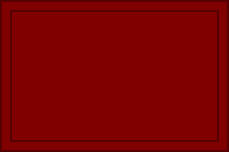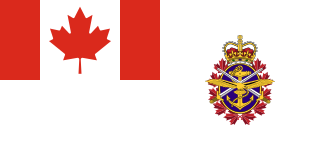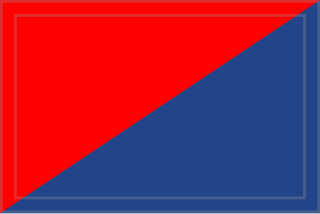
The 1st Commonwealth Division was the military unit that commanded Commonwealth land forces in the Korean War. The division was a part of the multinational British Commonwealth Forces Korea, with infantry units of the British Army, Canadian Army and Australian Army forming the bulk of the division. Additionally, the New Zealand Army supplied artillery contingents and an Indian medical unit was also attached. As with the "Korean Augmentation To the United States Army" (KATUSA) programme, numerous South Korean troops were seconded to the Commonwealth division to make up numbers under a scheme known as "KATCOM".

The 1st Canadian Division is a joint operational command and control formation based at CFB Kingston, and falls under Canadian Joint Operations Command. It is a high-readiness unit, able to move on very short notice, and is staffed and equipped to meet Canada’s military objectives to counter any potential threat.

The 3rd Canadian Division is a formation of the Canadian Army responsible for the command and mobilization of all army units in the provinces of Manitoba, Saskatchewan, Alberta and British Columbia, as well as all units extending westwards from the city of Thunder Bay.

The 5th Canadian Division is a formation of the Canadian Army responsible for the command and mobilization of most army units in the provinces of New Brunswick, Nova Scotia, Prince Edward Island and Newfoundland and Labrador; as well as some units in Kingston, Ontario. The division is recognized by the distinctive maroon patch worn on the sleeve of its soldiers.
North-West Europe 1944–1945 is a battle honour earned by regiments of the British Commonwealth forces during the Second World War that took part in the actions of the northern part of the war's Western Front. The battle honour North-West Europe is suffixed with the year, or years, in which the awarded unit took part in the action.

The following is a list of the notable authorized marches for various organisations of the Canadian Armed Forces. The first march listed is the march most commonly performed for that organisation on parade; it is commonly referred to simply as that organisation's "march" or "march past". In addition, many organisations also have additional pieces for slow marches, marches for mounted parades, pipe marches, etc.; they are subsequently listed and footnoted as applicable.

The Prince Edward Island Regiment is a Primary Reserve armoured reconnaissance regiment of the Canadian Forces, 5th Canadian Division, 36 Canadian Brigade Group. The regiment is based in Charlottetown and Summerside, Prince Edward Island.
Beginning with establishment of Fort Calgary in 1875, the city of Calgary, Alberta, has had some degree of permanent military presence throughout its history.

The 19th Alberta Dragoons was a cavalry regiment and later an armoured regiment of the Canadian Militia and later the Canadian Army. It was placed on the Supplementary Order of Battle in 1965. In 2006, it was taken off the Supplementary Order of Battle and amalgamated with the South Alberta Light Horse.
This is the Operation Herrick ground order of battle, which lists any British ground forces that have taken part in the duration of Operation Herrick between 2002 and 2014.

41 Canadian Brigade Group is a Canadian Army formation of the 3rd Canadian Division. The formation is composed of Army Reserve units within the province of Alberta and the Northwest Territories. The headquarters of the brigade is in Calgary.

The 6th Canadian Infantry Division was an infantry division of the Canadian Army, formed in 1942 during the Second World War. It was attached to Pacific Command. The division had a brigade sent to the Aleutian Islands Campaign, particularly at Kiska, but never saw action. The 6th Division was to have been part of a proposed Commonwealth Corps, formed for a planned invasion of Japan, but was disbanded on 31 January 1946, after the surrender of Japan in August 1945.
All units of the Canadian Armed Forces have an order of precedence that determines seniority; it often decides such matters as which unit forms up to the right of other units on a ceremonial parade, or the order in which marches or calls are played at a mess dinner.
This is the order of battle for the First Battle of Ypres fought from 19 October to 22 November 1914 as one of the main engagements of the First World War. It was fought between mixed British Expeditionary Force, French eighth army and armies of the German Empire in northern France and Flanders.
In September 1939, the British Army was in process of expanding their anti-aircraft and mobile assets. Among these new changes was the formation of Anti-Aircraft Command which was formed on 1 April 1939, and the 1st Armoured Division formed in 1937. The list below will include the British Army units, colonial units, and those units which were in the process of formation.
During the First World War the British Armed Forces was enlarged to many times its peacetime strength. This was done mainly by adding new battalions to existing regiments. Although sometimes identified by shoulder titles, generally the new battalions could not be identified from appearance. Consequently, the units in this list have been assembled considering only those as having a uniquely different cap badge.

Canadian military bands are a group of personnel in the Canadian Armed Forces (CAF) that performs musical duties for military functions. Military bands form a part of the Music Branch of the CAF, composed of six full-time professional Regular Force bands, 15 Regular Force voluntary bands, and 53 part-time reserve force bands. Bands of the Music Branch are often badged with the unit or Canadian Forces base insignia that they support.
The 1915 Birthday Honours were appointments by King George V to various orders and honours to reward and highlight good works by citizens of the British Empire. The appointments were made to celebrate the official birthday of The King, and were published in The London Gazette and in The Times on 3 June 1915.
The following is a hierarchical outline for the Canadian Armed Forces at the end of the Cold War. It is intended to convey the connections and relationships between units and formations.
The 13th Canadian Infantry Brigade was a formation of the Canadian Army that served in both World Wars. During World War I, the brigade formed part of the 5th Canadian Division. However, the 13th Brigade never saw combat as the brigade along with the 5th Canadian Division was broken up to provide reinforcements to the 4 other divisions of the Canadian Corps. During the Second World War, the brigade formed part of the 6th Canadian Infantry Division serving on the west coast in the home defence role and in June 1943, the brigade took part in Operation Cottage on Kiska during the Aleutian Islands campaign.









